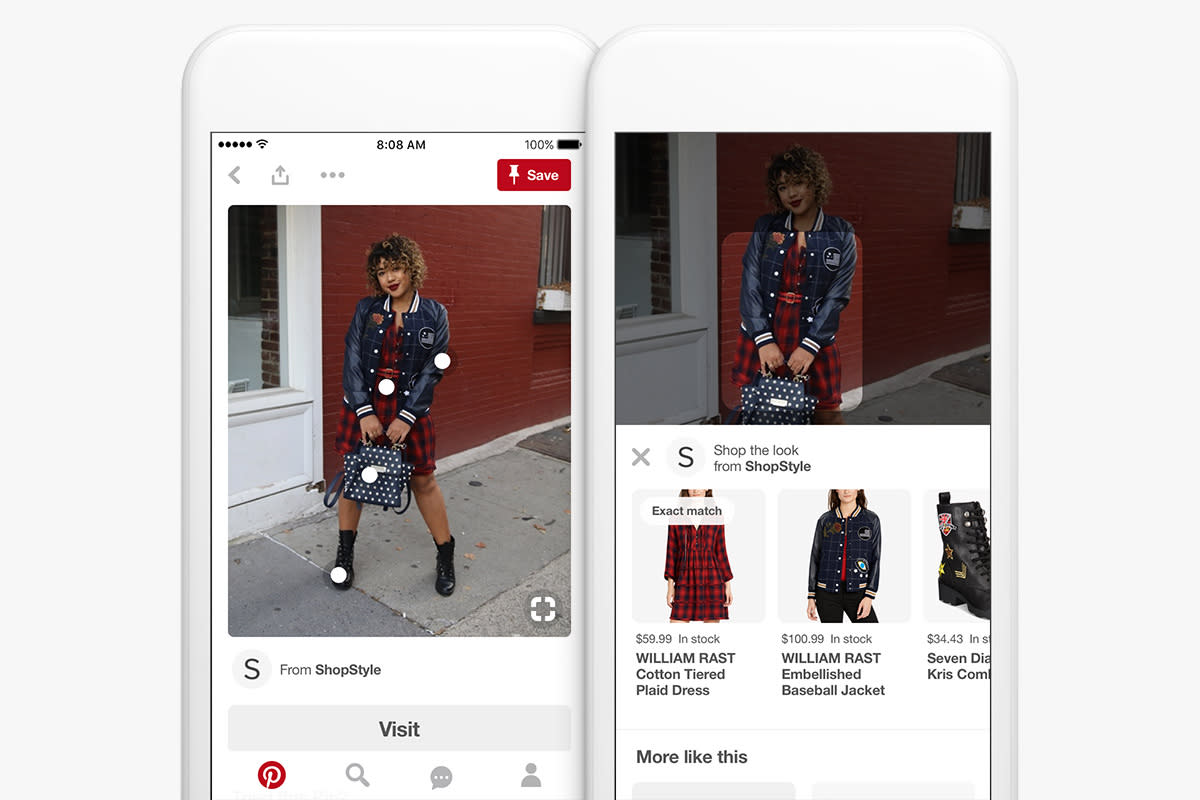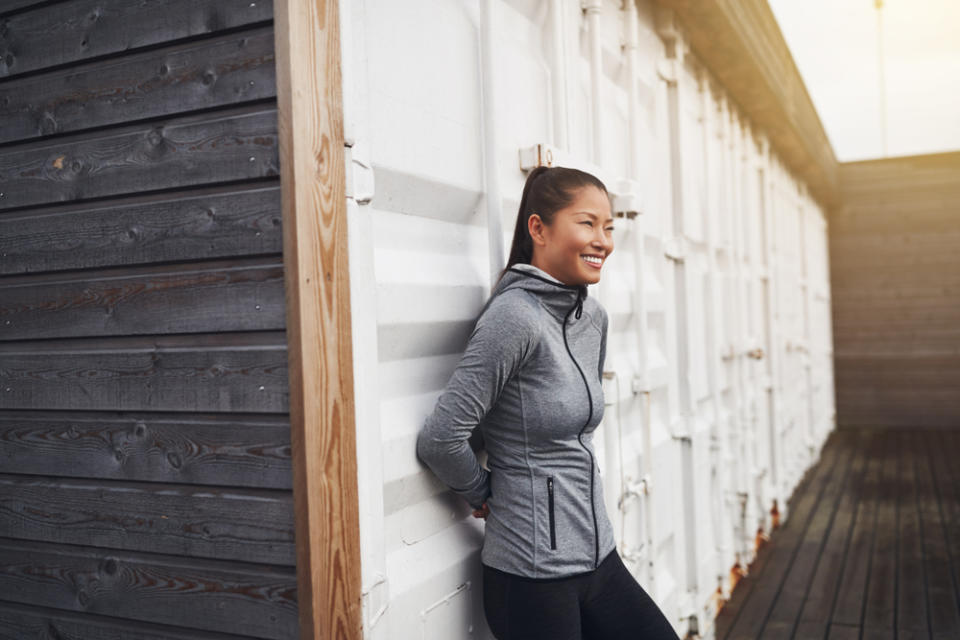Think Tank: How To Bring Inspiration and Discovery Back to Digital Shopping

It has never been easier for people to buy the things they want. Whether that’s done at the store with a credit card, on the sofa with a laptop, or during a commute using a messaging service — there is something for everybody. Thank you to the retail industry, for your unwavering focus and investment in a frictionless commerce experience. You’ve perfected how to tell when someone is just about to make that purchase. And it’s working, in the sense that you’re capturing those sales. But the question you need to ask yourself is whether you’re truly generating net new demand. Because if you’re looking for growth, it’s time to get back to the basics of retail.
Physical retail is rooted in creating compelling visual experiences that inspire people. Everything from window displays to pathing through a store is meant to help people discover something new, and unexpected. With the rise of online shopping and mobile devices, that highly visual browsing experience has been sacrificed. To date, online shopping innovations have been focused on transactions, not visual discovery. That makes it harder for retailers to inspire shoppers to make unexpected discoveries. As a result, basket sizes are decreasing, brand loyalty is quickly disappearing, and retailers are struggling to reach consumers earlier in their decision-making process.
Bottom line: People still want to discover new ideas, and they don’t always have the right words to seek them out. Retailers need to find inspiring ways to engage people earlier in their shopping journey, when they’re not necessarily in a store, and need more guidance.
The recent back-to-school season represents a nice example of how the power of discovery leads to retail growth opportunities. As an older mom of two young kids, I’ve been using the routine changes that come with this time of year as the perfect excuse to re-evaluate my unique needs in life. Of course, there are the obligatory new things the kids need to start the new school year — like shoes, jackets and lunch boxes. There’s also the “nice-to-haves,” like a new cutting board and food storage containers to make packing lunches more fun and efficient. And then there’s the “really nice-to-haves,” like new workout gear for Mom — who’s planning to get back into shape. And new bedding for everyone, to encourage good sleep routines for busybodies.

With all of these shopping needs, I could use price as my first and/or only criteria to find and evaluate these purchase needs. That approach would help me quickly get these things and check them off my growing to-do list. But what I was most excited about was the opportunity to find the things that allowed me to express me and my family’s sense of style and way of being in the world. I want to discover ideas and things that fit my kids’ personalities and interests, and my taste. And being busy, I want to be able to start my shopping on my phone. With this in mind, I also needed brands to inspire me by showing their most relevant products for me to discover and consider in this stage of the process. While price is important to me, I’m not ready to focus on it just yet. I want to be courted by brands that will show me products that match my style and give me options for designing my best life.
In this phase, I’d like retailers to introduce me to new lunch ideas and ways of packing them, for the picky second grader. Or help me discover the right tennis shoes for my recently running-more (but still clumsy) four-year-old who isn’t yet able to tie her own shoes. I’d like a brand to show me the perfect sports bra for motivating me to more seriously commit to a fall workout schedule. And how great would it be to have a retailer remind me how important sleep is for everyone’s new schedule, inspiring me to try those “new, crisp, cool cotton percale sheets” that are also on sale for a limited time. I was sold with the visual of an older athletic woman sleeping like a baby next to her two young kids. That’s the me I want, and I’ll pull out my wallet to achieve it.
Maybe I’m a little biased, since I work at Pinterest. But when I look at the mobile-first shopping platforms out there today, I really believe Pinterest is uniquely helping people with product and brand discovery in moments that matter. Pinterest is helping people like me discover their tastes, explore their style preferences and come up with new ideas and options that they may not have considered or even known existed.

Pinterest is building a visual discovery engine that takes on where traditional text and voice search left off. Pinterest is also enabling more personalized shopping and discovery experiences thanks to a mix of human curation and machine learning. We’ve learned a ton about how people choose and categorize the ideas they love on Pinterest. And we use those unique insights to help people find new possibilities that are just right for them. It’s part of what makes Pinterest so special. The more someone searches, saves and explores, the better their recommendations get.
For retailers, our vision is to make it simple to get all of your products on Pinterest so that the right ones are shown to the right consumers in the moments that matter. Whether you’re a new retailer to Pinterest or you’ve been on it for some time, the key to successful advertising is providing content (aka Pins) that facilitate and contribute to people’s visual discovery experiences. This also requires redefining the way you plan, evaluate and optimize campaign performance.
Here are three things to keep in mind as you start embarking on the new adventures of visual discovery-focused marketing:
Early matters: Brands that reach people right as they’re starting to shop are more likely to impact their purchase decision and foster brand loyalty.
Visual speaks volumes: Visual discovery tools create a similar experience to in-store browsing, allowing marketers to reach consumers in moments when they don’t know exactly what products they want to buy. Seeing the possibilities helps people figure out what they want to buy.
Personalization: Tailoring to individual tastes and interests is the key to unlocking the best shopping experiences.
Traditional digital-shopping experiences have focused on the transaction first, providing price points and product laydown shots before inspiring the desire to consider new options. I believe that as an industry, we have to go back to basics and make the digital shopping experience more visual, more relevant and connect with the consumer early in the purchase process. Retailers will benefit from this approach — it leads to more committed purchases, bigger basket sizes and stronger loyalty. But even more importantly, so will shoppers. They’ll get the same choice and convenience, combined with a more inspirational and personalized experience. Isn’t life more fun when we have access to all the possibilities available for living our best lives?
Amy Vener is retail vertical strategy lead at Pinterest. She has over 15 years of experience in developing sophisticated digital marketing and measurement programs that accelerate audience and revenue growth for retailers, publishers and advertising technology companies. At Pinterest, Vener leads the retail vertical strategy, focused on helping retailer partners understand how to best use the Pinterest platform to achieve a competitive advantage within their industry.
Related stories
AT&T Bucks Retail Store Closure Trend With 1,000 Planned Openings
Field Notes: Ways to Reduce Fraud, Improve Shopping Experience
Think Tank: Organizational Architecture Is Retail's 'Next Wave of Transformation'
Get more from WWD: Follow us on Twitter, Facebook, Newsletter

